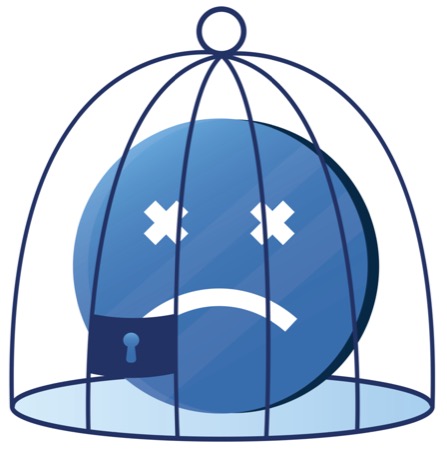SAN FRANCISCO—In the spring of 2014, Christopher Conley, MD, met with Robbie and his parents one last time before the 19-year-old was taken to the OR for cataract surgery. The veteran doctor sensed the family’s apprehension. He put a hand on the stepfather’s shoulder and said: “I’ve got a little boy at home, too. I’m going to take care of your kid like he’s my own.”
The teenager’s preexisting health conditions, which included contractures, scleroderma and graft-versus-host disease, increased the risks associated with a general anesthetic, but Conley had done his homework. He consulted with the most senior pediatric anesthesiologists at Boston Children’s Hospital (BCH), and carefully reviewed Robbie’s intubation history.
“I remember that day in fragments: losing the airway on induction, the code, the failed trach. Then hours later, holding my own toddler while sobbing on my kitchen floor,” said Conley, now an anesthesiologist at Boston Medical Center (BMC). (He previously held a joint faculty position at BCH and BMC). He told the story of that tragic outcome at the 2023 annual meeting of the American Society of Anesthesiologists.
Conley described how Robbie’s airway was reestablished, and he started breathing again but had suffered irreparable brain damage. Conley spent most of the next several nights in the family lounge of the ICU with Robbie’s parents, but the young man didn’t survive. “This event, and the legal proceedings that followed, have been the single greatest challenge to me in my life and as a doctor,” he said.
It’s not a matter of whether you will get sued, Conley warned the audience of his peers, but when. A recent analysis by the American Medical Association on medical liability claims reported that nearly one-third of U.S. physicians in 2022 had been named in a lawsuit.1 That ratio jumped to almost half for doctors over the age of 54. The author, JosÉ Guardado, PhD, wrote that the high incidence of lawsuits was not an indication of wrongdoing on the part of doctors: “Consider that 65 percent of claims that closed between 2016 and 2018 were dropped, dismissed, or withdrawn, and out of the 6 percent of claims that were decided by a trial verdict, 89 percent were won by the defendant.”
Malpractice lawsuits have become commonplace. They’re now considered part of the deal when practicing medicine. What is much less common, however, is hearing about the experience of being sued from a physician who has been through it. It’s not easy for someone who has forged their identity by helping people to suddenly find themselves accused of doing harm. “I hope someone in the audience will feel a little less isolated, should you find yourself in the crosshairs of the medical legal system,” Conley said.
He described the emotional fallout of losing a patient. “In the hours, days, weeks and months that followed, I was a total mess.” Conley experienced intrusive reflections, anxiety, flashbacks, nightmares, insomnia and depression. He leaned on his support system, which included family, colleagues, faith and prayer, but the letter he received about a year or so after the incident, the one that notified him of the family’s intention to sue, brought all that stress and self-doubt rushing back. “I seriously considered leaving medicine altogether,” he said.
Bridget Pulos, MD, an assistant professor of anesthesiology at Mayo Clinic in Rochester, Minn., outlined how a variety of events, including litigation, can trigger the second-victim response in healthcare workers. Albert Wu, MD, an internist at the John Hopkins Bloomberg School of Public Health, in Baltimore, first defined the term in 2000, and Susan Scott, PhD, RN, a nurse scientist and patient safety expert from University of Missouri Health Care in Columbia, helped to generalize and build on the applicability of the concept. The most current definition applies to any healthcare provider who is involved in an unanticipated adverse patient event, medical error or patient-related injury and is then traumatized by that experience.
Some patient advocates and physicians are concerned that the term “second victim” takes the focus off the patient and their family. Identifying and addressing the psychological toll of an adverse event on healthcare workers, however, does not have to diminish any of the care and respect afforded to those at the center of a tragic outcome. Instead, the second-victim theory maps how an adverse event can radiate out and affect anyone involved, including the physicians who are expected to dust themselves off and move on to their next patient.
Research by Scott and other experts has revealed a common trajectory to this experience for healthcare providers. Pulos outlined the six stages, which starts with the chaos and immediate aftermath of the accident. Stage 2 brings intrusive reflections and rumination about the event, which can make it hard to focus on other tasks. The physician begins to accept and process the difficult emotions associated with the event during a phase labeled restoring personal integrity. But then comes what Scott calls the inquisitions. These are the internal patient safety review protocols at the hospital, such as root cause analyses or morbidity and mortality conferences. Stage 5, emotional first aid, includes the physician’s support system, both personal and any programs, mentors or peer support available through work. The last stage involves moving . “For some, we would call that thriving if they did get that support,” Pulos said. For others, moving on means dropping out of medicine.
Pulos referenced a white paper by The Joint Com-mission in 2018 that recognized the need to support second victims as part of a commitment to patient safety.2 It’s not reasonable to expect physicians to be impervious to these incidents, and ignoring the consequences can lead to burnout. “I’m speaking about a culture change, shifting from a culture of shame and blame to a culture of psychological safety, where we are supporting each other. We’re normalizing the emotional impact of these events,” she said.
Jennifer Oetter, the managing partner of Lewis Brisbois Bisgaard & Smith in Portland, Ore., echoed the point by Pulos about normalization, except her emphasis was on the legal context. She wants to help demystify and destigmatize the experience of a lawsuit for physicians. Oetter explained the relevant legal terminology, like the difference between a complaint letter and a subpoena, and addressed common misconceptions she hears from physicians about litigation.
If the incident involved an obvious mistake, like if someone was given the wrong medication or had an operation on the wrong side of their body, then the hospital or insurer will settle the matter quickly. If a case makes it to trial, then the jury will ultimately have to answer two questions: Did the physician meet the standard of care? And if not, did that breach of care lead to harm? The standard of care is determined by expert testimony that establishes whether or not a reasonable and prudent physician practicing in the same or similar community in the same or similar circumstance would do the same thing.
The bad news about litigation, Oetter explained, is that there are no alternatives once someone decides to sue. And the bar is low for anyone who wants to initiate a lawsuit. All you need is a pen, some paper and the filing fee, which varies by county. It’s $150 in Multnomah County where Oetter works. “I could sue you. I could sue you. I could sue you,” she said, motioning to the audience. She described how these types of cases are rarely personal for the plaintiff, even if it feels that way for the physician. People are most likely to sue for financial reasons, or because they want more information and are suspicious of a cover-up. Physicians with long-standing relationships with their patients are less likely to get sued, which puts specialists like anesthesiologists at a disadvantage because they often provide one-off treatments and don’t get the chance to spend as much time with their patients.
Even though physicians don’t have a say on whether the lawsuit happens, Oetter stressed that they still have agency throughout the process. “You do have choices,” she said. A lawyer is assigned to the case by the healthcare system or insurance company, but a physician can fire them if they’re not satisfied. They can also choose their level of involvement. Do they want to be included in every aspect of the case and get copied on all the emails and reports that are exchanged? Or do they want to go back to work and ignore the proceedings as much as possible? “All of those choices are OK. Nobody should judge you for however you act in the context of this unexpected, and probably for you unprecedented, moment,” she said.
Physicians cannot discuss the specifics of an active lawsuit, except with their spouse and lawyer, but they can tell people that they’re going through litigation. “The more you say it, the more you acknowledge that it happens, the less people will feel shame about it, because the reality of it is that it’s the cost of doing business and it’s going to happen to the majority of people,” Oetter said.
One of the experts who had been prepared to testify in Conley’s trial was a world authority on graft-versus-host disease and had determined that the issue that caused Robbie’s obstructed airway had never before been described in the case literature for that disease. Conley’s legal team built a solid case to prove that he had met the standard of care, but then the COVID-19 pandemic delayed the trial. And then the insurance company decided in early 2021 to settle the case for what they figured would be the cost to go through the proceedings. The ordeal abruptly ended, almost seven years after the incident, but without Conley getting the chance to tell his side of the story—how he had provided compassionate and responsible care for a very sick young man.
Not a day goes by that Conley doesn’t think about Robbie and wish that he had a different outcome back in the spring of 2014. But he has found ways to move forward and rediscovered his passion for anesthesiology. “The path to thriving takes time and effort. I have to actively choose this path each day or it will not happen,” he said.
Conley is grateful for Scott’s work on the second-victim phenomenon, but he described his experience as more like a sine wave than a linear progression through the six stages. He encountered emotional valleys at each step of the legal process and leaned on his support system right from the start. Emotional first aid was infused all along the way. Both Conley and Pulos are teachers; they stress to their students and residents the importance of investing in a strong support system in advance so that it’s there for them when they need it the most.
Conley credits his family, faith, a professional counselor who specializes in physician litigation support and his colleagues with helping him to navigate this difficult chapter of his career. “If and when you’re named in a lawsuit, please remember that many of your colleagues either have been, or will go, through it at least once in their career. Don’t go it alone.”
By Doug Horner
Editor’s note: The patient’s name and other details have been changed for confidentiality.
References
- Guardado J. Medical Liability Claim Frequency Among U.S. Physicians. American Medical Association; 2023. Policy Research Perspectives No. 2023-3. Accessed April 22, 2024. https://www.ama-assn.org/system/files/policy-research-perspective-medical-liability-claim-frequency.pdf.
- The Joint Commission. Quick Safety Issue 39: supporting second victims. 2018. Accessed April 22, 2024. https://www.jointcommission.org/resources/news-and-multimedia/newsletters/newsletters/quick-safety/quick-safety-issue-39-supporting-second-victims/



